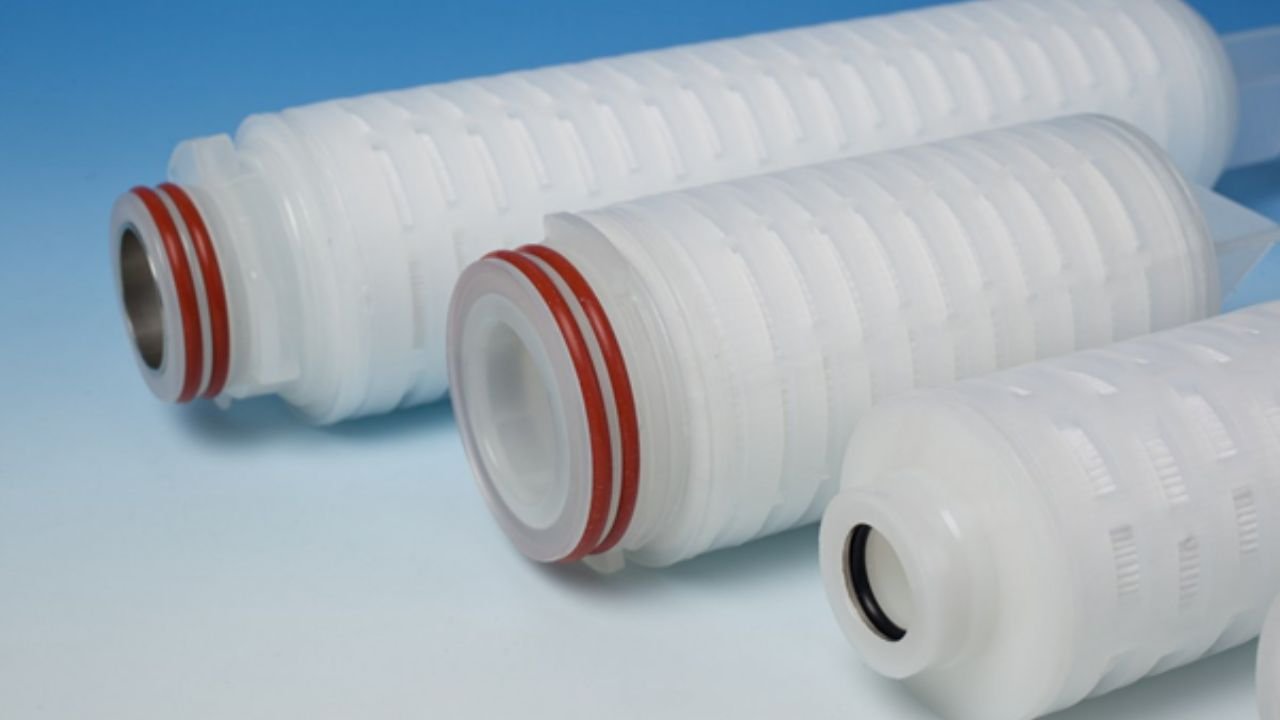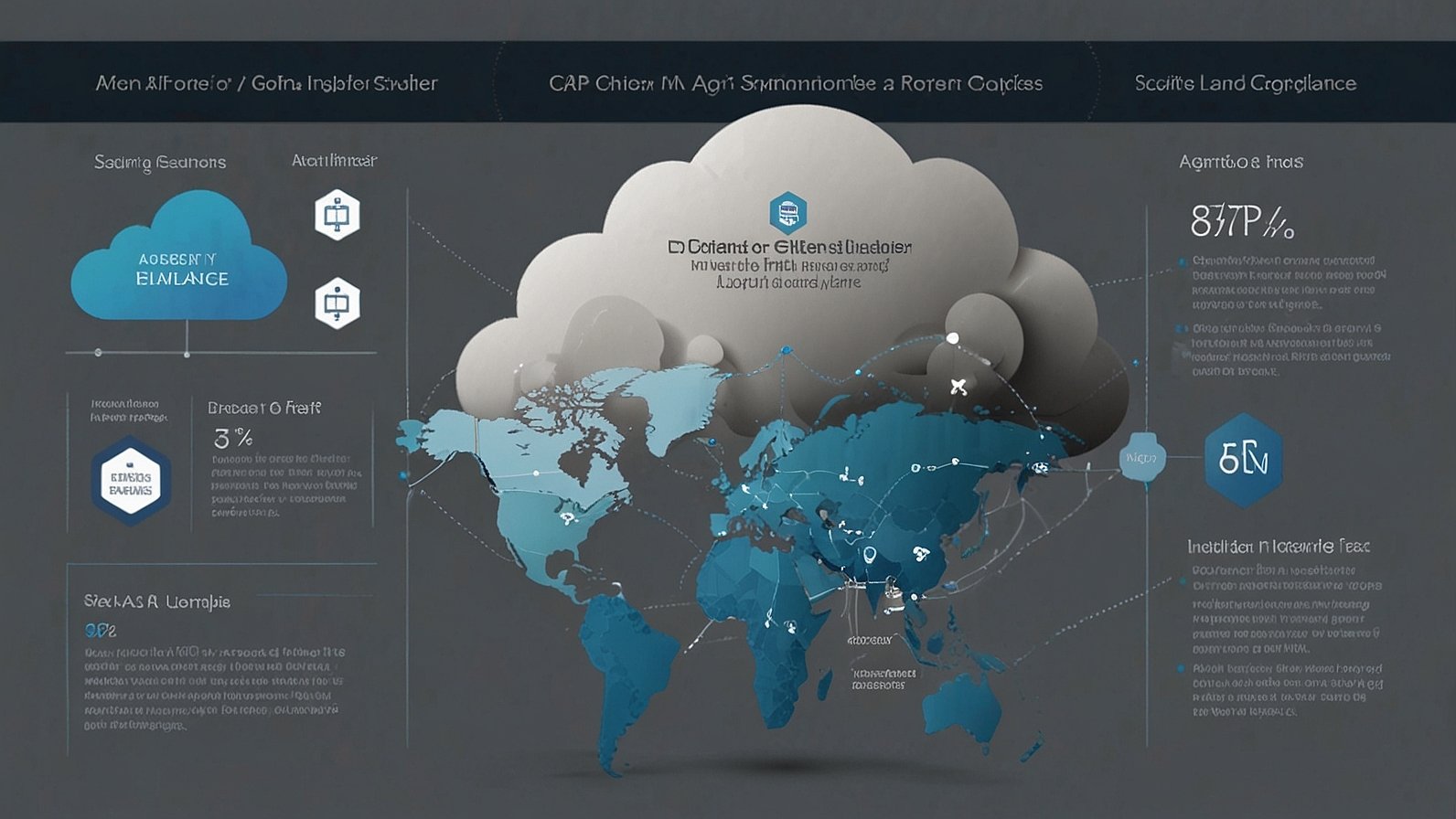Introduction
In modern industrial filtration systems, filter cartridges are indispensable c hiomponents that ensure the purity, consistency, and safety of process fluids. Whether in water treatment, pharmaceuticals, food and beverage, power generation, or chemical industries, industrial filter cartridges play a critical role in removing particles, contaminants, and impurities from liquids and gases. Among the wide range of filter materials, PP (Polypropylene), PTFE (Polytetrafluoroethylene), and PVDF (Polyvinylidene Fluoride) stand out as three of the most widely used filtration media due to their unique physical, chemical, and thermal properties.
This article provides a comprehensive comparison of PP, PTFE, and PVDF industrial filter cartridges, highlighting their structural characteristics, performance parameters, applications, advantages, and limitations. The goal is to help engineers, plant operators, and procurement specialists make informed decisions when choosing the best cartridge filter for their industrial systems.
What Are Industrial Filter Cartridges?
Industrial filter cartridges are cylindrical filtration devices designed to fit into filter housings and remove suspended solids, bacteria, and other impurities from process streams. Unlike traditional bag filters, cartridge filters offer higher precision, better flow distribution, and wider chemical compatibility.
They are manufactured in a variety of materials, each selected to meet specific operational requirements such as:
- Micron rating (filtration precision from 0.1 µm to 100 µm or higher)
- Flow rate (ability to handle high throughput without significant pressure drop)
- Temperature resistance
- Chemical resistance
- Mechanical durability
The choice of cartridge material—whether PP, PTFE, or PVDF—directly impacts filtration performance, service life, and cost efficiency.
Overview of PP, PTFE, and PVDF Filter Cartridges
Before diving into detailed comparisons, let’s first understand the fundamental characteristics of these three common cartridge materials:
1. PP (Polypropylene) Filter Cartridges
- Material nature: Thermoplastic polymer, lightweight, cost-effective, and chemically inert to many acids and alkalis.
- Filtration structure: Available as pleated, melt-blown, or depth-type cartridges.
- Applications: General-purpose filtration in water treatment, food & beverage, and microelectronics.
- Advantages: Low cost, broad usability, excellent particle retention.
- Limitations: Limited thermal resistance (usually up to ~80°C).
2. PTFE (Polytetrafluoroethylene) Filter Cartridges
- Material nature: Fluoropolymer with exceptional chemical resistance, hydrophobicity, and thermal stability.
- Filtration structure: Mostly pleated, used for precision filtration.
- Applications: Pharmaceuticals, semiconductor, chemical processing, sterile filtration.
- Advantages: High resistance to aggressive solvents, bacteria retention, long service life.
- Limitations: Higher cost compared to PP.
3. PVDF (Polyvinylidene Fluoride) Filter Cartridges
- Material nature: Specialty fluoropolymer with both hydrophobic and hydrophilic grades available.
- Filtration structure: Pleated or hollow fiber membranes.
- Applications: Biopharmaceuticals, ultrapure water, food and dairy industries.
- Advantages: High strength, excellent chemical and thermal stability, low protein binding.
- Limitations: More expensive than PP, slightly less chemically resistant than PTFE.
Material Properties and Their Impact on Filtration Performance
The molecular composition and polymer properties of PP, PTFE, and PVDF determine their performance in filtration systems. Below is a comparison across key parameters:
1. Chemical Resistance
- PP: Resistant to most acids, bases, and organic solvents. However, it is not suitable for strong oxidizing agents or highly aggressive chemicals.
- PTFE: Exhibits the broadest chemical resistance among industrial polymers. It withstands virtually all solvents, acids, bases, and oxidizers.
- PVDF: Strong resistance to most acids, bases, and oxidants. Better than PP, slightly less universal than PTFE.
👉 Verdict: PTFE > PVDF > PP
2. Thermal Stability
- PP: Functional up to ~80°C continuous use (sometimes 90°C in short-term).
- PTFE: Operates effectively up to 200°C.
- PVDF: Stable up to 150°C.
👉 Verdict: PTFE offers the highest thermal stability.
3. Mechanical Strength
- PP: Good flexibility, lightweight, but limited mechanical durability under high pressure or temperature.
- PTFE: Strong, but more brittle compared to PVDF.
- PVDF: Superior mechanical toughness, excellent durability under pressure and stress.
👉 Verdict: PVDF > PTFE > PP
4. Hydrophobicity & Wettability
- PP: Generally hydrophobic, but can be modified to hydrophilic grades.
- PTFE: Strongly hydrophobic, ideal for gas filtration and bacteria retention.
- PVDF: Available in both hydrophobic and hydrophilic versions, making it versatile for both liquid and gas filtration.
👉 Verdict: PVDF provides flexibility in application due to dual grades.
5. Cost Consideration
- PP: Lowest cost, widely available, best for general-purpose industrial filtration.
- PTFE: Highest cost, reserved for critical high-purity and chemical-resistant applications.
- PVDF: Mid-to-high cost, often used in biopharmaceutical and food applications where cost-performance balance is critical.
👉 Verdict: PP = economical choice; PVDF = balanced performance; PTFE = premium choice.
Application Comparison of PP, PTFE, and PVDF Cartridges
Now, let us compare how each type is used in real-world industries:
PP Filter Cartridges – Where Are They Used?
- Municipal and industrial water treatment (removal of sand, rust, scale, and fine particulates)
- Food and beverage prefiltration (beer, wine, juices, dairy)
- Electronics industry prefiltration
- General-purpose chemical filtration
PP cartridges are often used as pre-filters, extending the life of more expensive PTFE or PVDF filters.
PTFE Filter Cartridges – Where Are They Used?
- Pharmaceutical sterile filtration (removal of bacteria and endotoxins)
- Biotechnology (fermentation broths, buffer solutions, cell culture media)
- Semiconductor and microelectronics (ultrapure water, solvents, process gases)
- Aggressive chemical processing
PTFE cartridges are chosen where absolute reliability and chemical compatibility are critical.
PVDF Filter Cartridges – Where Are They Used?
- Biopharmaceuticals (protein solutions, vaccines, injectables)
- Food & dairy industries (milk, whey protein, enzyme preparations)
- Ultrapure water systems
- High-value specialty chemicals
PVDF is preferred when low extractables, high strength, and low protein binding are essential.
Detailed Performance Comparison Table
To make the differences clearer, the following table summarizes the key performance indicators of PP, PTFE, and PVDF industrial filter cartridges:
| Property / Feature | PP (Polypropylene) | PTFE (Polytetrafluoroethylene) | PVDF (Polyvinylidene Fluoride) |
| Chemical Resistance | Good (acids, bases, most solvents) | Excellent (universal resistance to almost all chemicals) | Very Good (strong acids, bases, oxidizers) |
| Thermal Stability | Up to ~80–90°C | Up to ~200°C | Up to ~150°C |
| Mechanical Strength | Moderate | Strong but brittle | High, with excellent toughness |
| Hydrophobicity | Hydrophobic (can be modified) | Strongly hydrophobic | Available in hydrophilic & hydrophobic grades |
| Protein Binding | Medium | Very Low | Very Low |
| Cost Level | Low | High | Medium to High |
| Typical Applications | Water treatment, food & beverage prefiltration | Pharmaceuticals, microelectronics, chemical processing | Biopharmaceuticals, ultrapure water, dairy industry |
| Service Life | Moderate | Longest (under critical use) | Long (balanced performance) |
| Sterilization | Limited (not suitable for repeated steam) | Excellent (can withstand steam autoclaving) | Good (suitable for steam and chemical sterilization) |
👉 Conclusion from Table:
- If you need low-cost, general-purpose filtration → PP
- If you need ultimate chemical resistance and sterilization → PTFE
- If you need a balance between strength, purity, and cost → PVDF
Advantages and Disadvantages of Each Filter Cartridge
PP Pleated Filter Cartridges
Advantages:
- Low cost and easy availability.
- Good performance for general water and liquid filtration.
- Wide range of configurations (pleated, melt-blown, depth filter).
- Lightweight and simple installation.
Disadvantages:
- Limited temperature resistance.
- Not suitable for aggressive chemicals or sterilization.
- Shorter service life compared to PTFE and PVDF.
PTFE Membrane Filter Cartridges
Advantages:
- Exceptional chemical compatibility (resistant to acids, bases, solvents).
- Excellent high-temperature tolerance (up to 200°C).
- Low protein binding, making it ideal for pharmaceutical and biotech applications.
- Long service life with high bacterial retention.
- Suitable for sterilization (steam or autoclave).
Disadvantages:
- Higher initial cost.
- More brittle structure compared to PVDF (requires careful handling).
- Over-engineered for applications where PP would be sufficient.
PVDF Membrane Filter Cartridges
Advantages:
- Strong mechanical strength and durability.
- Available in both hydrophobic and hydrophilic grades for liquid and gas filtration.
- Low extractables, suitable for critical applications.
- Excellent balance of chemical and thermal resistance.
- Low protein binding (critical in biopharmaceutical processes).
Disadvantages:
- More expensive than PP, though cheaper than PTFE.
- Not as universally chemically resistant as PTFE.
- Still over-specified for simple water or low-demand filtration tasks.
Procurement Guide: How to Choose Between PP, PTFE, and PVDF
When selecting the right industrial filter cartridge, consider the following factors:
- Application Industry
- Water Treatment & General Industrial Use → PP is sufficient.
- Pharmaceuticals, Biotech, and Semiconductors → PTFE for absolute purity and chemical resistance.
- Food, Dairy, and Biopharma Applications → PVDF offers a balance between purity and cost.
- Water Treatment & General Industrial Use → PP is sufficient.
- Operating Temperature
- If working temperatures exceed 100°C, PP is not suitable.
- For up to 150°C → PVDF is appropriate.
- For >200°C → Only PTFE is reliable.
- If working temperatures exceed 100°C, PP is not suitable.
- Chemical Compatibility
- Aggressive chemicals or solvents → PTFE.
- Moderate chemicals → PVDF.
- Neutral or basic water/food processes → PP.
- Aggressive chemicals or solvents → PTFE.
- Budget Constraints
- Limited budget → PP.
- Balanced performance vs. cost → PVDF.
- Premium investment for critical reliability → PTFE.
- Limited budget → PP.
- Sterilization and Cleanability
- Steam sterilization required → PTFE or PVDF.
- Single-use or disposable prefiltration → PP.
- Steam sterilization required → PTFE or PVDF.
Common FAQs About PP, PTFE, and PVDF Industrial Filter Cartridges
Q1: Which industrial filter cartridge is best for ultrapure water systems?
A: Both PTFE and PVDF are excellent choices, but PVDF is often preferred due to its balance of cost, low extractables, and long service life.
Q2: Can PP filter cartridges be sterilized?
A: No, PP cannot withstand repeated steam sterilization. It is best used as a disposable pre-filter.
Q3: Is PTFE worth the higher cost?
A: Yes, if your process involves high temperatures, aggressive solvents, or requires sterile conditions, PTFE ensures long-term savings by reducing replacement frequency.
Q4: What is the difference between hydrophobic and hydrophilic PVDF cartridges?
A: Hydrophobic PVDF is used for gas filtration and venting, while hydrophilic PVDF is used for liquid filtration in biopharma and food processing.
Q5: Which material offers the longest service life?
A: PTFE generally lasts the longest under demanding conditions, while PVDF balances durability with affordability.
Q6: Are PP filter cartridges FDA-approved for food applications?
A: Yes, many PP cartridges meet FDA and NSF standards, making them suitable for food & beverage filtration.
Q7: Can PVDF filter cartridges handle organic solvents?
A: Yes, PVDF is resistant to many solvents, but for highly aggressive chemicals, PTFE remains the better option.
Q8: How do micron ratings differ among PP, PTFE, and PVDF cartridges?
A: All three are available in a wide range (0.1 µm to 100 µm), but PTFE and PVDF are more commonly used in sub-micron applications.
Q9: Which cartridge is most environmentally friendly?
A: PP is recyclable and widely produced, but PVDF and PTFE offer longer service life, which can reduce overall waste.
Q10: Do PP, PTFE, and PVDF cartridges fit the same housings?
A: Yes, most industrial filter cartridges follow standard sizes (DOE, SOE, 10”, 20”, 30”), making them interchangeable depending on application needs.
Case Studies: Practical Use of Different Filter Cartridges
- Case 1: Municipal Water Plant
A municipal water treatment plant reduced costs by using PP filter cartridges as prefilters before RO membranes. This extended membrane life by 30%. - Case 2: Pharmaceutical Sterile Filtration
A biotech company switched from PP to PTFE cartridges for sterilizing culture media, resulting in zero contamination incidents over 12 months. - Case 3: Dairy Processing Facility
A dairy manufacturer replaced PP filters with PVDF cartridges, achieving improved protein recovery due to PVDF’s low protein binding.
Final Conclusion
When comparing PP, PTFE, and PVDF industrial filter cartridges, it is clear that each has its unique strengths and is designed for specific industrial needs:
- PP Filter Cartridges: Best for general-purpose, cost-sensitive, disposable applications such as water treatment and food & beverage prefiltration.
- PTFE Filter Cartridges: The premium choice for critical industries such as pharmaceuticals, biotechnology, and microelectronics where maximum purity, chemical resistance, and thermal stability are required.
- PVDF Filter Cartridges: The balanced solution for biopharmaceuticals, ultrapure water, and dairy industries, where low protein binding, high strength, and moderate cost are most important.
Ultimately, the choice of industrial filter cartridge depends on your specific process requirements—chemical compatibility, temperature, sterility, budget, and regulatory compliance. By carefully evaluating these factors, you can maximize system efficiency, extend equipment life, and ensure the highest quality of your end products.
You May Also Read: 7 Construction Scheduling Mistakes and How to Avoid Them











